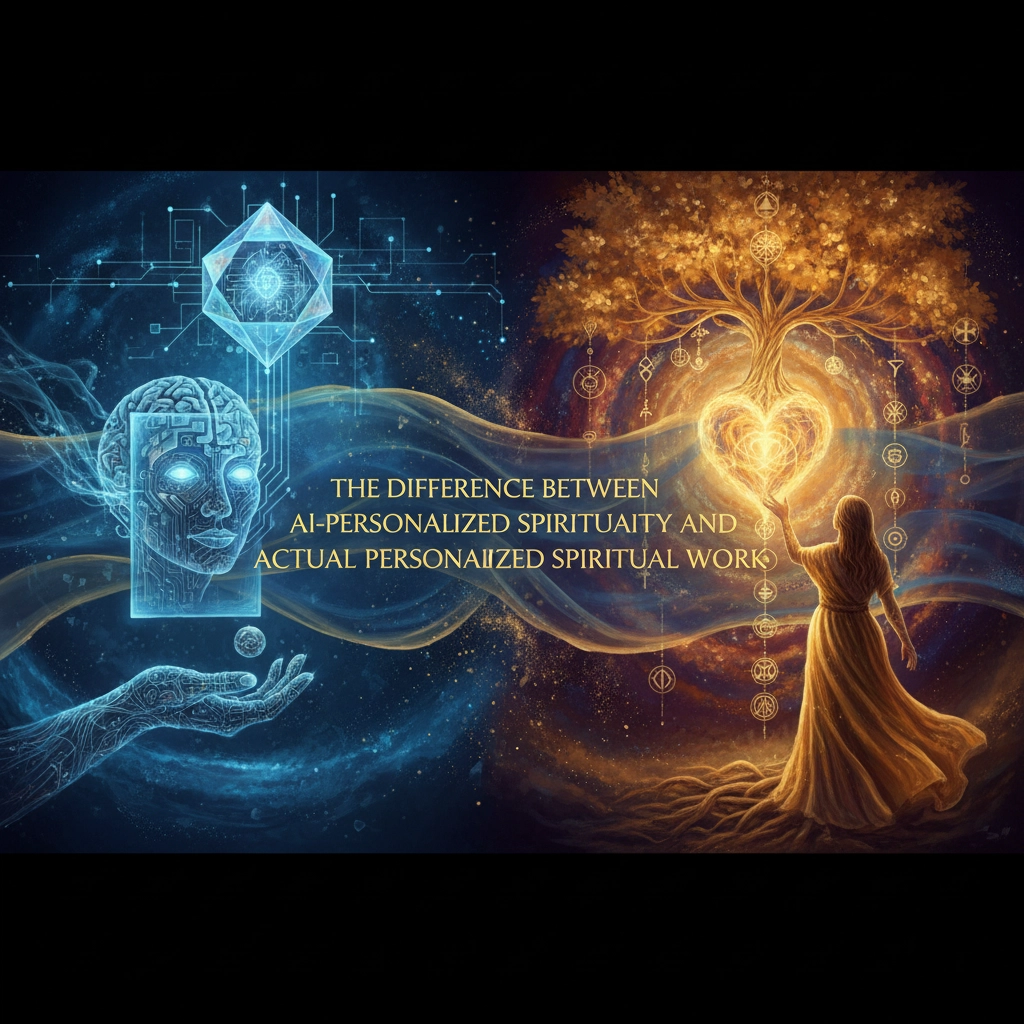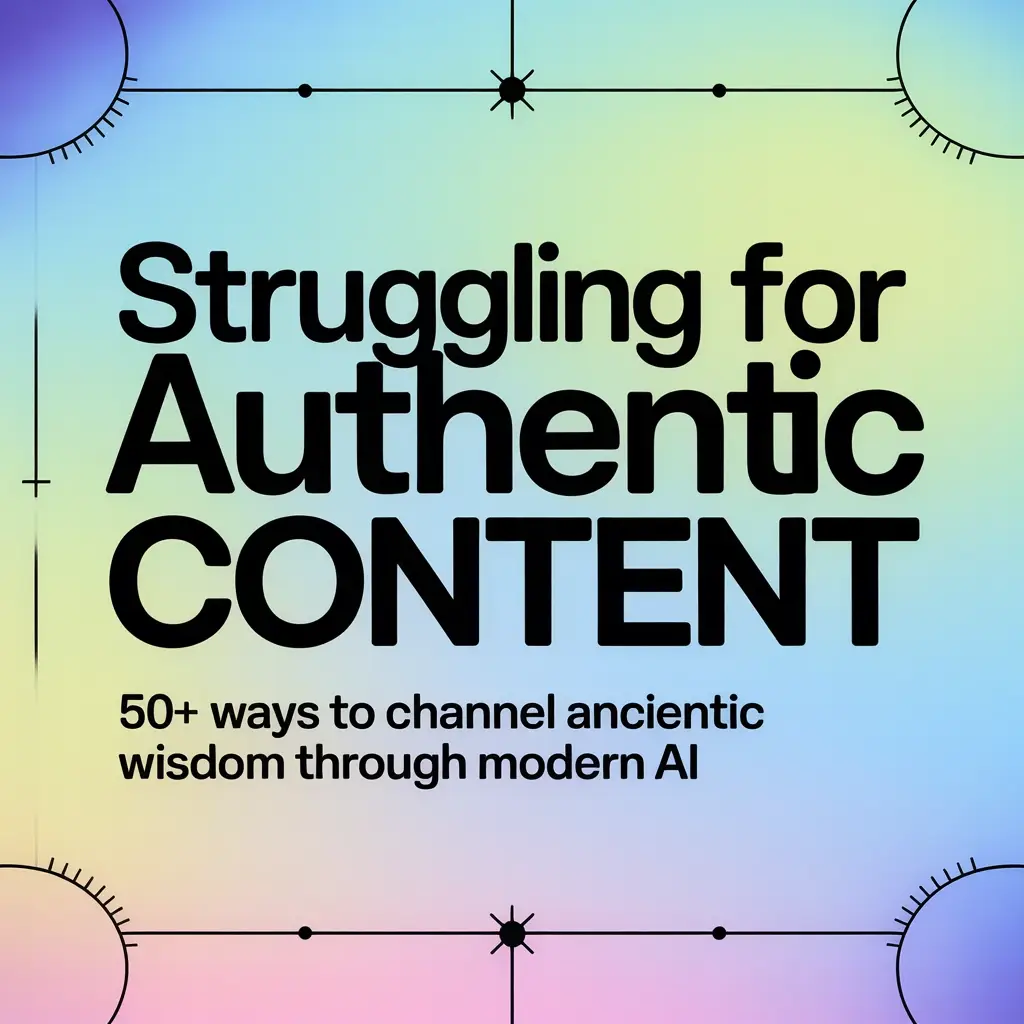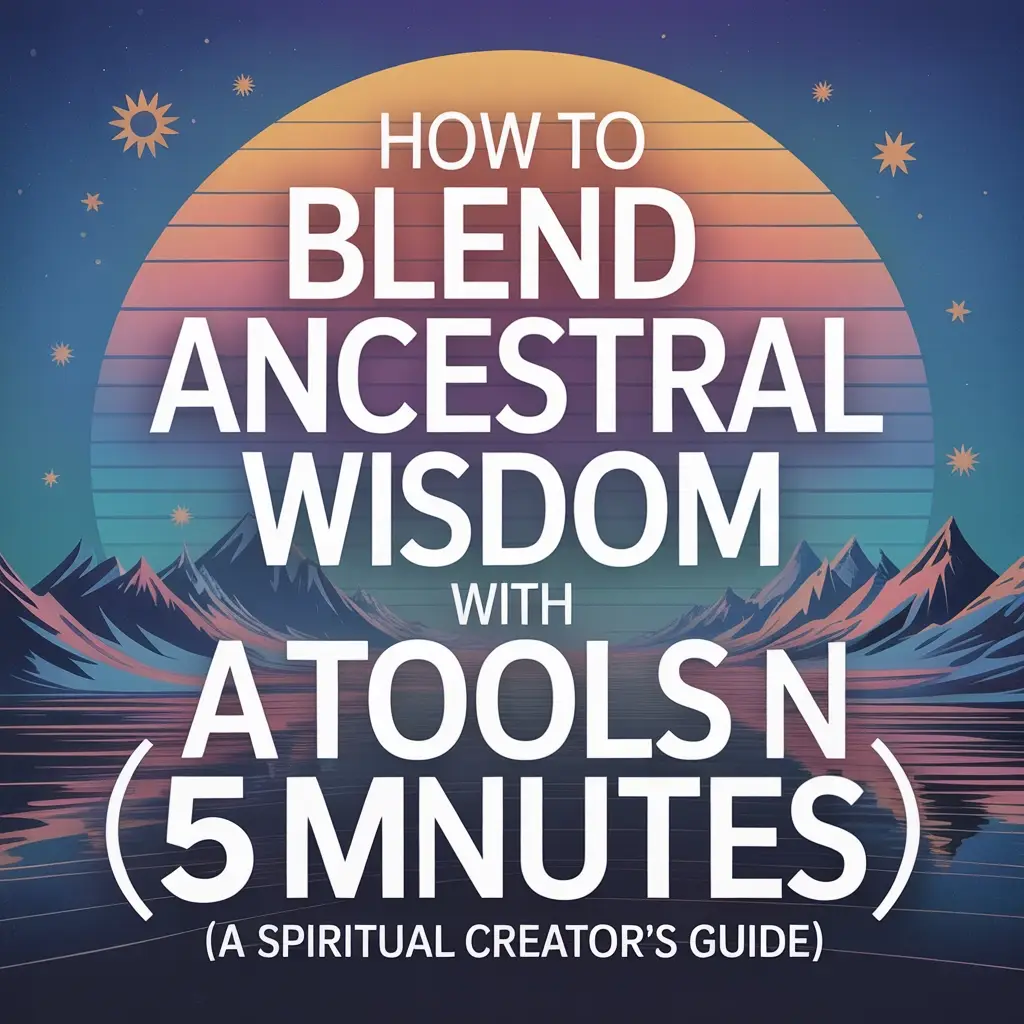The spiritual technology market has grown significantly. AI-powered meditation apps, chatbots offering spiritual guidance, and algorithm-driven personalization dominate the landscape. These tools promise customized spiritual experiences. The question remains: how do they compare to traditional personalized spiritual work?
Understanding AI-Personalized Spirituality
AI spirituality tools analyze user data to deliver customized content. They track meditation habits, emotional patterns, and engagement metrics. Popular platforms like Headspace, Calm, and newer AI-focused apps use this data to suggest practices.
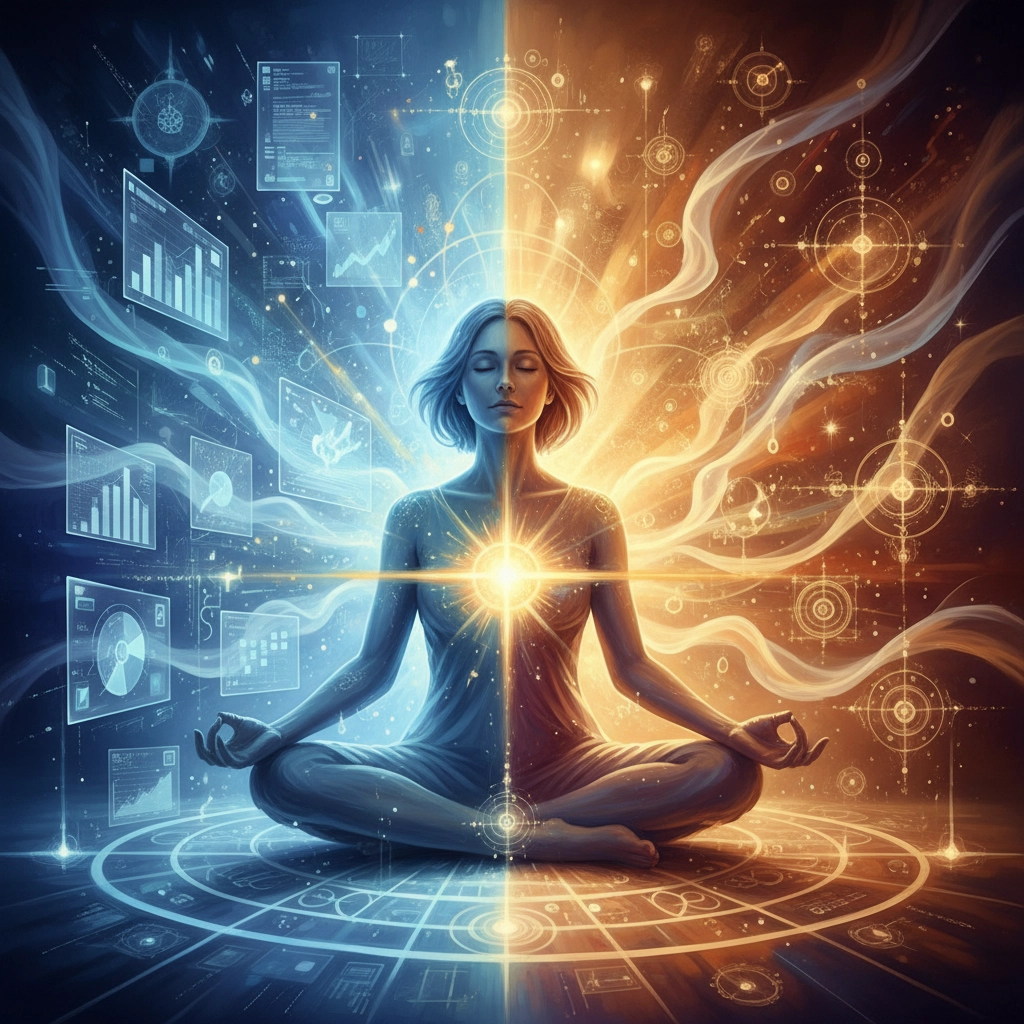
These systems process vast amounts of spiritual texts instantly. They can reference thousands of sources simultaneously. Users receive recommendations based on behavioral patterns and stated preferences.
The technology offers several advantages:
- Available 24/7 without scheduling constraints
- Consistent delivery of practices and teachings
- Ability to process multiple spiritual traditions
- Scalable access for large populations
- Cost-effective compared to human guidance
Research shows users report improved meditation consistency when using AI-enhanced platforms. The convenience factor drives regular engagement. The systems adapt to user schedules and preferences automatically.
Core Elements of Authentic Personalized Spiritual Work
Traditional spiritual work operates differently. It centers on developing inner awareness and discernment. The process requires direct experience rather than algorithmic analysis.
Human-to-human transmission forms the foundation. Experienced teachers recognize subtle patterns in students. They respond to energy, presence, and unspoken communications. This recognition cannot be programmed.
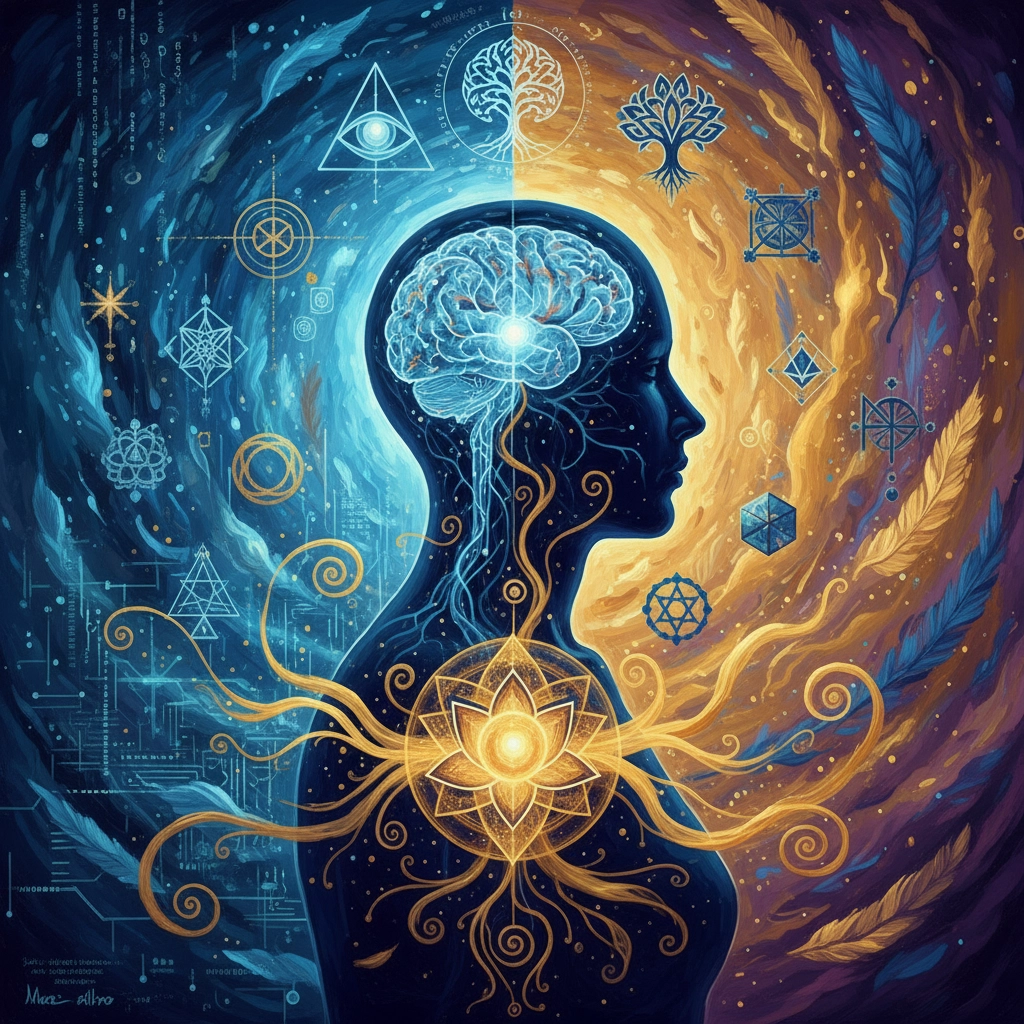
Authentic personalization develops through:
- Direct observation of inner states
- Recognition of unique spiritual patterns
- Intuitive sensing of appropriate practices
- Real-time adjustment based on presence
- Transmission of consciousness states
The teacher-student relationship provides empathy and emotional intelligence. These connections offer support during challenging spiritual passages. The guidance emerges from lived experience and spiritual realization.
Key Operational Differences
The methods differ fundamentally in their approach to personalization.
Data Source
AI systems rely on behavioral data and user inputs. They analyze patterns in app usage, survey responses, and engagement metrics. The personalization depends on quantifiable information.
Authentic spiritual work draws from direct perception. Teachers sense energy patterns, emotional states, and spiritual development stages. They recognize qualities that resist measurement or algorithmic processing.
Response Mechanism
AI provides recommendations based on pattern matching. If users with similar profiles benefited from specific practices, the system suggests those practices. The logic follows statistical correlations.
Human guidance responds to immediate presence. Teachers adjust their approach based on what they perceive in the moment. They may completely change direction based on subtle observations.
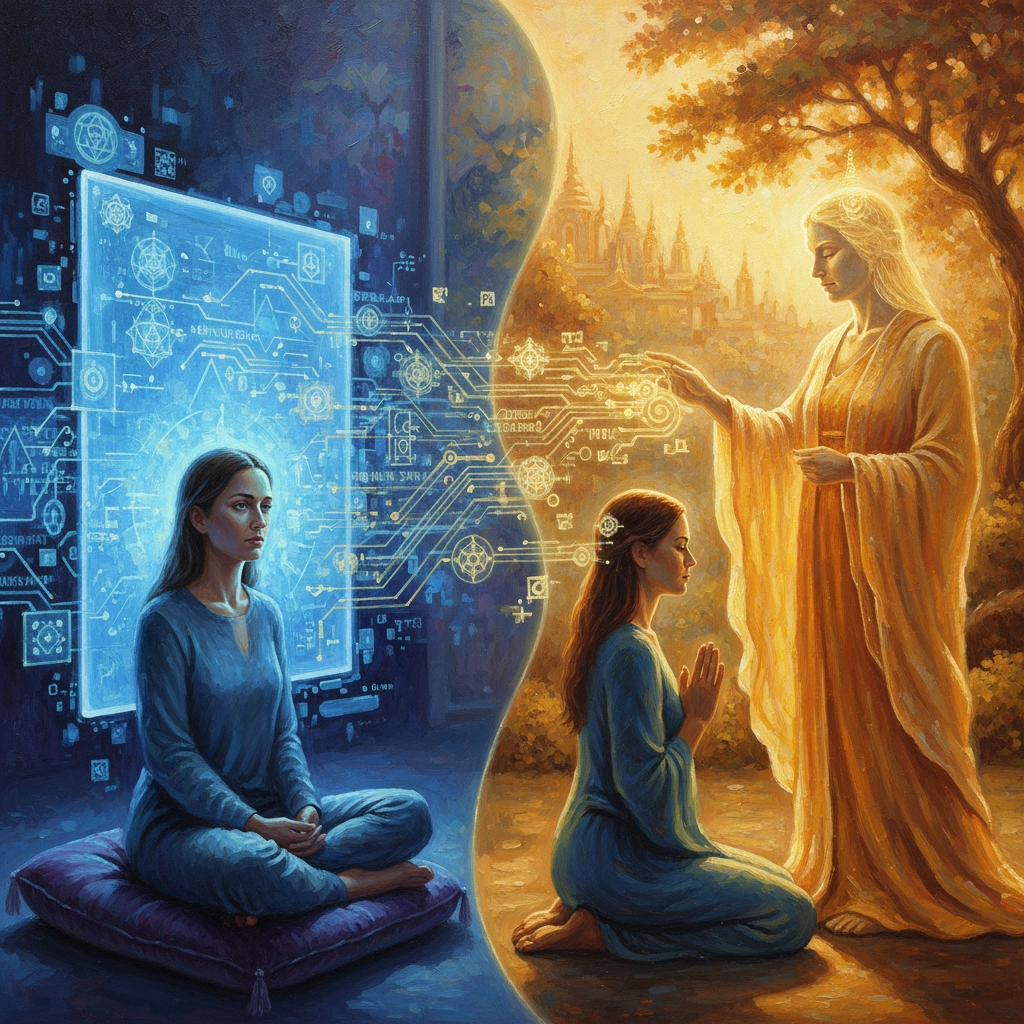
Development Focus
AI systems optimize for user engagement and reported satisfaction. They aim to deliver content that users find helpful and continue using. Success metrics include retention rates and positive feedback.
Traditional spiritual work focuses on consciousness development. The goal involves expanding awareness and cultivating wisdom. Progress may include uncomfortable phases that users might avoid if given algorithmic alternatives.
Limitations of Algorithmic Spirituality
AI systems carry significant constraints when applied to spiritual development.
Consciousness Gap
The most fundamental limitation involves consciousness itself. AI processes information about consciousness but cannot experience conscious states. It lacks the direct knowing that characterizes spiritual insight.
Spiritual development involves mystery, paradox, and non-linear breakthroughs. These qualities resist algorithmic prediction. The spontaneous insights that mark authentic spiritual growth cannot be programmed.
Bias and Programming Constraints
AI systems reflect their programming and training data. The algorithms may contain ideological biases or limited perspectives. Users receive guidance filtered through these constraints.
The training data determines the range of possibilities. If certain spiritual approaches or insights are underrepresented in the data, the system cannot access them. This creates blind spots in the guidance.

Maturity Questions
Spiritual guidance requires emotional and spiritual maturity. AI systems lack lived experience and the wisdom that emerges from navigating spiritual challenges. They cannot model the integration that comes from years of practice.
The guidance quality depends entirely on input sources. Without genuine spiritual realization in the programming team, the outputs may lack depth or authenticity.
The Irreplaceable Elements
Several aspects of spiritual development cannot be automated or algorithmically replicated.
Presence Transmission
Experienced teachers transmit states of consciousness through their presence. Students often receive insights or shifts simply by being in the field of a realized teacher. This transmission occurs beyond words or instructions.
AI cannot generate or transmit presence. It processes text and data but lacks the conscious field that characterizes human spiritual transmission.
Intuitive Discernment
Authentic spiritual work develops internal guidance systems. Students learn to recognize what practices serve their development and what approaches may hinder progress. This discernment emerges through experience.
AI provides external recommendations but cannot develop users' internal sensing abilities. It may actually inhibit the development of spiritual discernment by providing ready-made answers.
Mystery Navigation
Spiritual paths involve navigating unknown territories. Students encounter experiences that resist categorization or explanation. Skilled teachers help students work with mystery without premature conceptualization.
AI systems require explainable logic and clear categorization. They cannot guide users through genuinely mysterious experiences that transcend algorithmic processing.
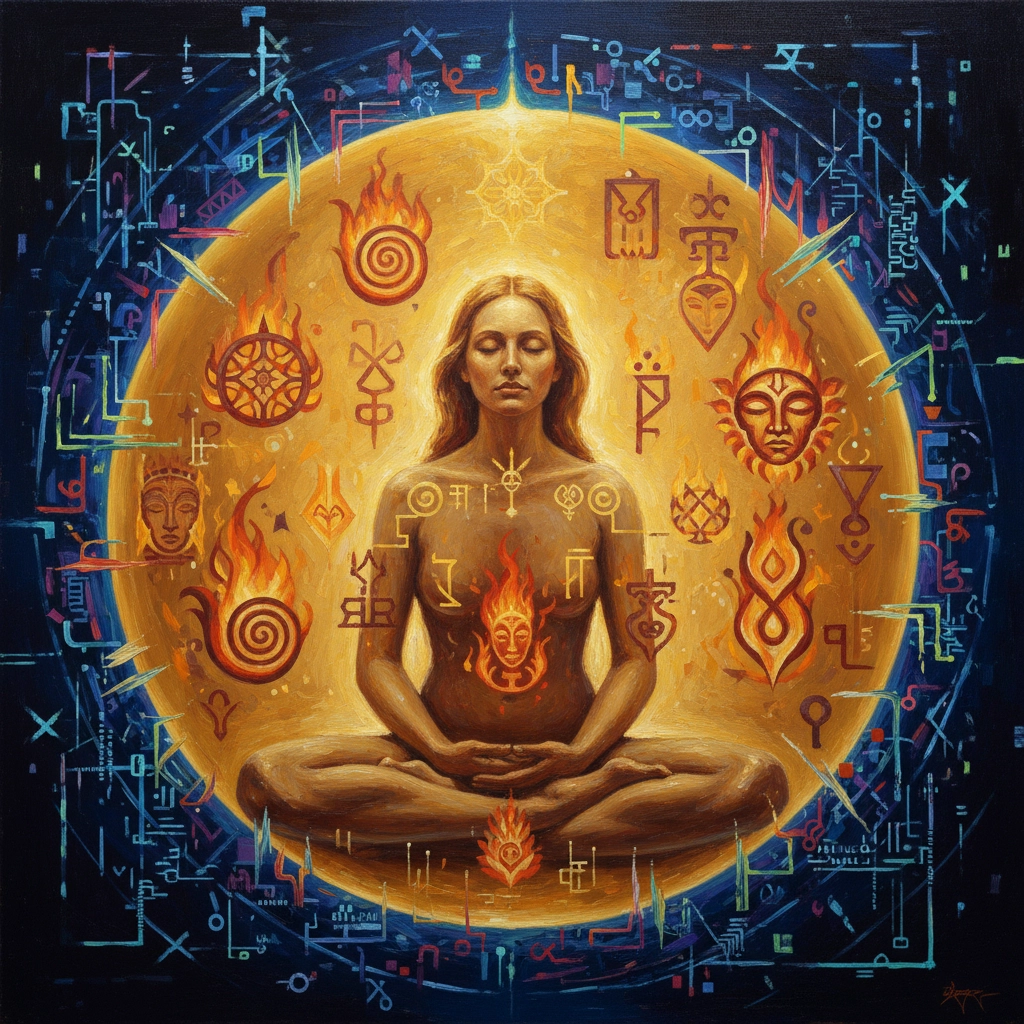
Integration Possibilities
The most effective approach may involve strategic combination rather than replacement.
AI tools can support consistent practice schedules. They provide reminders, track progress, and offer educational content. These functions supplement rather than replace human guidance.
The technology excels at accessibility and convenience. Users in remote areas or with limited resources can access basic spiritual education through AI platforms.
However, the core elements of spiritual development require human consciousness. The expansion of awareness, cultivation of wisdom, and navigation of spiritual challenges benefit from guidance rooted in direct realization.
Practical Applications
Users might employ AI tools for:
- Daily practice reminders and scheduling
- Access to diverse spiritual texts and teachings
- Basic meditation instruction and timing
- Educational content about different traditions
- Progress tracking and habit formation
Traditional spiritual work remains essential for:
- Developing inner discernment and intuitive guidance
- Navigating challenging spiritual passages
- Receiving transmission of consciousness states
- Processing mystical or transcendent experiences
- Integrating spiritual insights into daily life
The distinction lies not in rejecting technology but in understanding appropriate applications. AI serves as a useful adjunct to authentic spiritual work rather than a replacement for the irreplaceable elements of human consciousness, presence, and wisdom.
Both approaches offer value within their proper scope. The key involves recognizing which elements of spiritual development require human consciousness and which can benefit from technological support.

